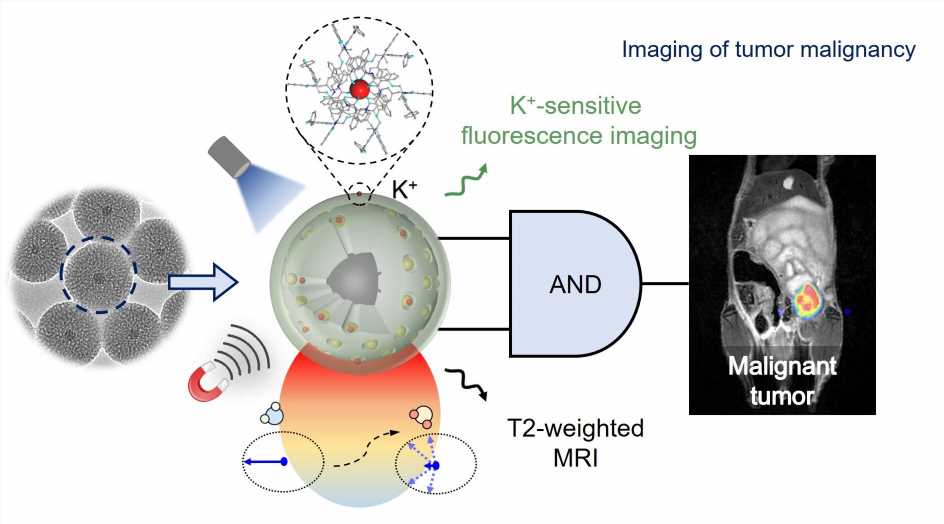
Tumor malignancy identification plays an essential role in clinical management of cancer. Currently, biopsy is the gold standard for malignancy identification in most tumor cases, it is, however, invasive that can cause great discomfort to patients, and potentially increase the risk of distant metastases due to the complex sampling process. With the development of molecular imaging probes, non-invasive medical imaging approaches, such as magnetic resonance imaging (MRI), fluorescence imaging (FI), computed tomography, and ultrasound, etc., have been used for non-invasive tumor diagnosis. Nevertheless, majority of imaging strategies are often dependent on imaging probes that lack specificity for identification of tumor malignancy.
Considering that necrotic cell death and overexpressed potassium ion (K+) channels are major hallmarks of malignant tumors, but not for benign ones, the extracellular K+ concentration is significantly elevated in the malignant tumor microenvironment compared with that of benign tissue. Based on this, a new research led by Prof. Daishun Ling from Shanghai Jiao Tong University reported a K+-sensitive dual-mode imaging probe (KDMN) to realize real-time tumor imaging while identifying the malignancy.
The KDMN consists of optical K+ indicators embedded in magnetic mesoporous silica nanoparticle, which is subsequently coated with a K+-selective membrane that exclusively permits the passage of K+ while excluding other cations. The KDMNs afford superior MR contrast effect and K+-specific FI performance. Moreover, KDMN-enhanced MRI confers attenuated signals at the tumor sites for effective tumor detection. Meanwhile, KDMN-based K+-sensitive FI provides a significant difference in fluorescence signals between malignant tumors and benign ones because there is an elevated extracellular K+ concentration in the malignant tumor microenvironment. Notably, the integration of KDMN-based MRI and FI via cascaded logic circuit has successfully achieved self-confirmation of dual-mode imaging results, thus allowing reliable and accurate imaging of tumor malignancy.
Source: Read Full Article



